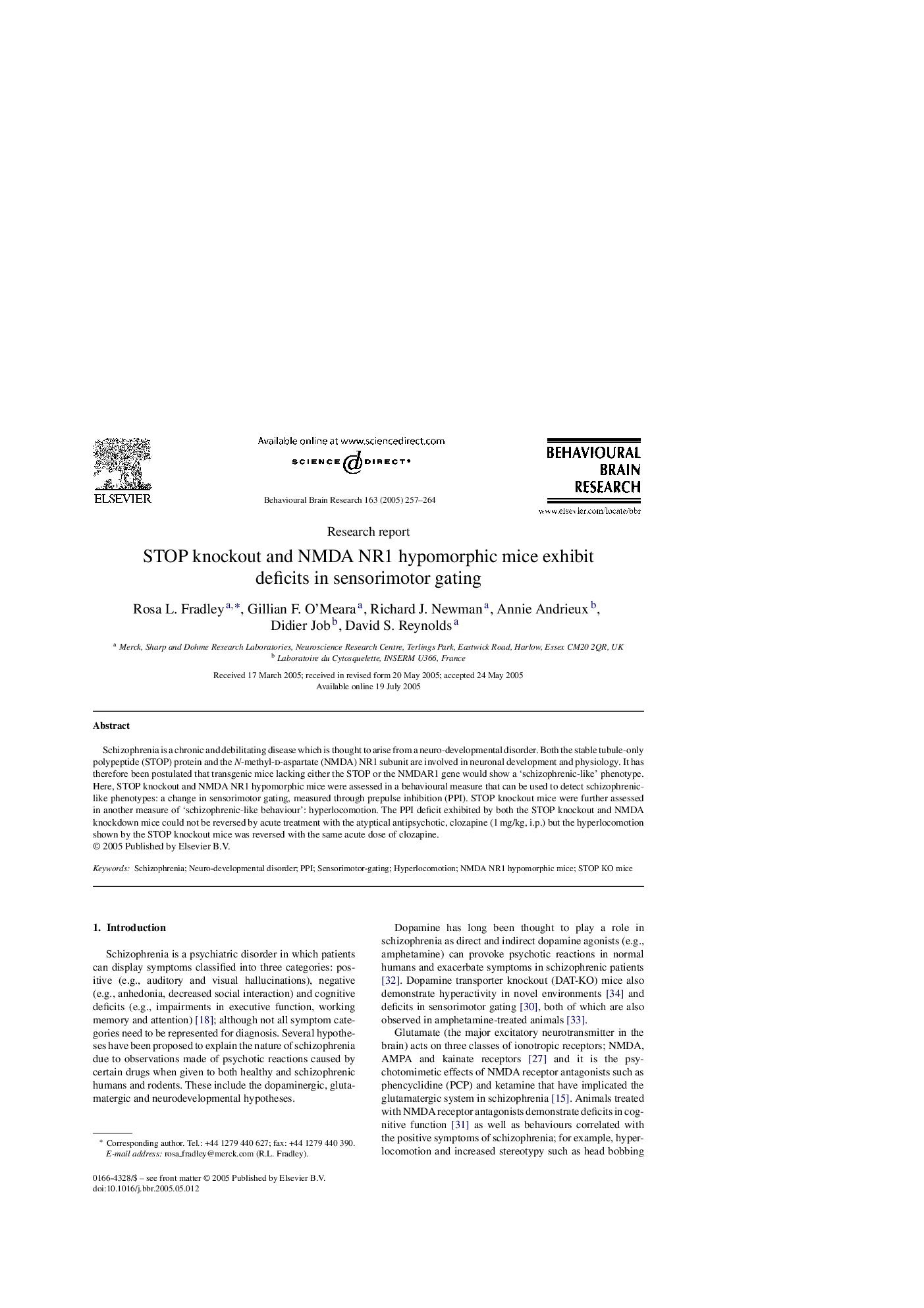| Article ID | Journal | Published Year | Pages | File Type |
|---|---|---|---|---|
| 9406397 | Behavioural Brain Research | 2005 | 8 Pages |
Abstract
Schizophrenia is a chronic and debilitating disease which is thought to arise from a neuro-developmental disorder. Both the stable tubule-only polypeptide (STOP) protein and the N-methyl-d-aspartate (NMDA) NR1 subunit are involved in neuronal development and physiology. It has therefore been postulated that transgenic mice lacking either the STOP or the NMDAR1 gene would show a 'schizophrenic-like' phenotype. Here, STOP knockout and NMDA NR1 hypomorphic mice were assessed in a behavioural measure that can be used to detect schizophrenic-like phenotypes: a change in sensorimotor gating, measured through prepulse inhibition (PPI). STOP knockout mice were further assessed in another measure of 'schizophrenic-like behaviour': hyperlocomotion. The PPI deficit exhibited by both the STOP knockout and NMDA knockdown mice could not be reversed by acute treatment with the atyptical antipsychotic, clozapine (1Â mg/kg, i.p.) but the hyperlocomotion shown by the STOP knockout mice was reversed with the same acute dose of clozapine.
Keywords
Related Topics
Life Sciences
Neuroscience
Behavioral Neuroscience
Authors
Rosa L. Fradley, Gillian F. O'Meara, Richard J. Newman, Annie Andrieux, Didier Job, David S. Reynolds,
